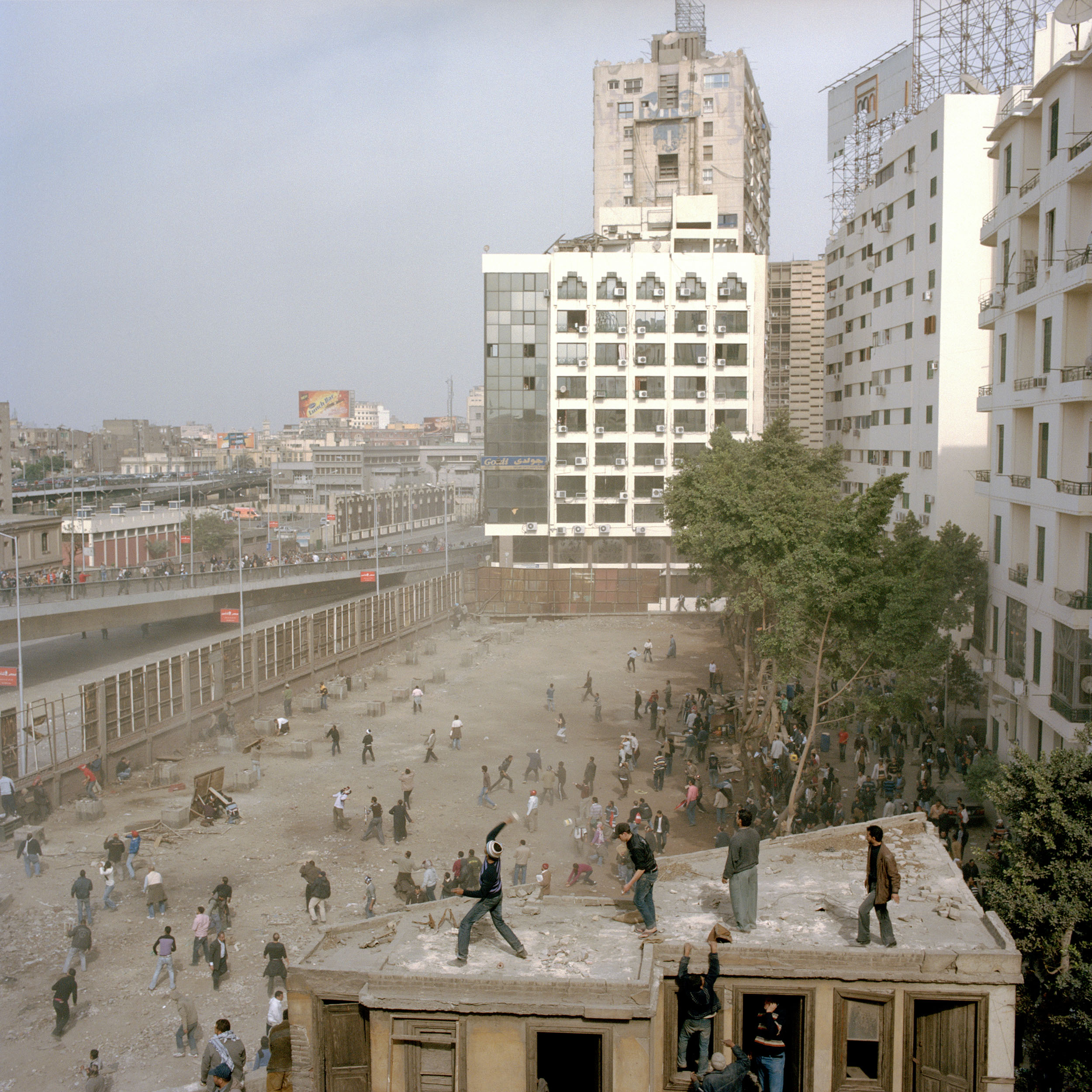
Anti-government protesters hurl stones at Mubarak supporters from the roof of an abandoned house on the edge of Tahrir Square.
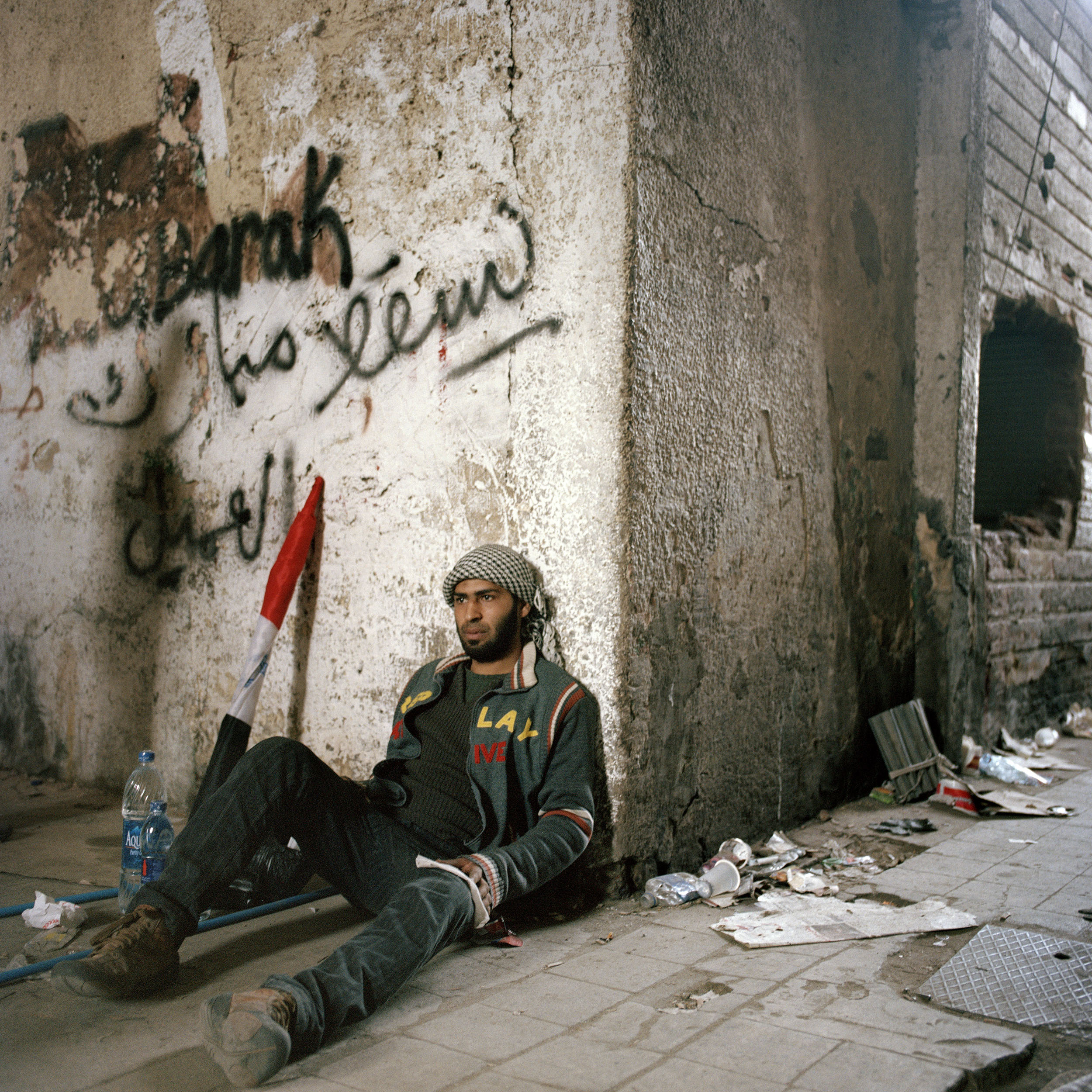
A pro democracy protester who injured his leg the previous day when fighting broke out with supporters of Mubarak rests in a passage way leading off Tahrir square.
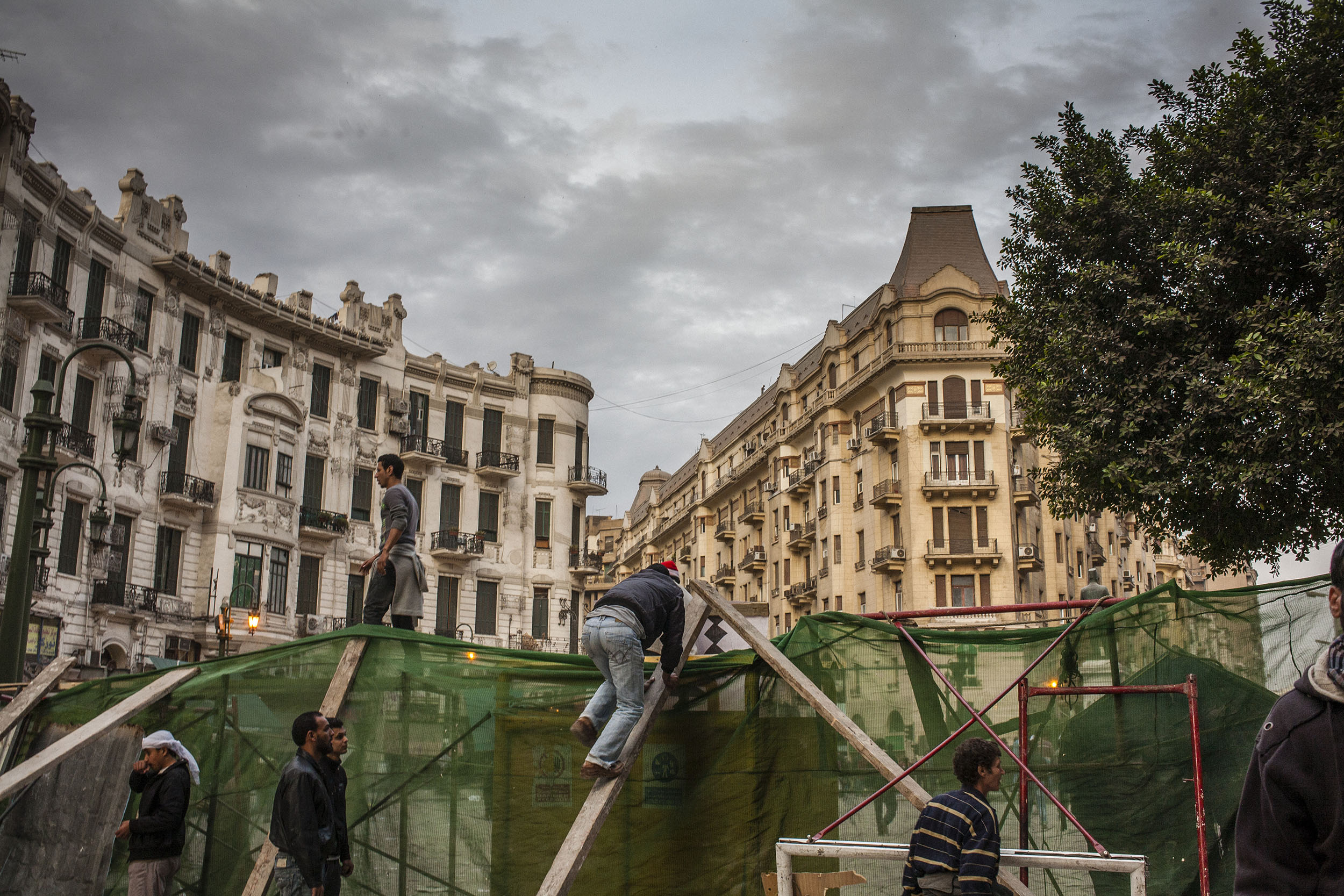
Anti government protesters on barricades constructed near Tahrir square. Throughout Friday, 4 February, anti government protesters protected their positions from pro Mubarak supporters around Tahrir square, the scene of heavy clashes between pro and anti government protesters.
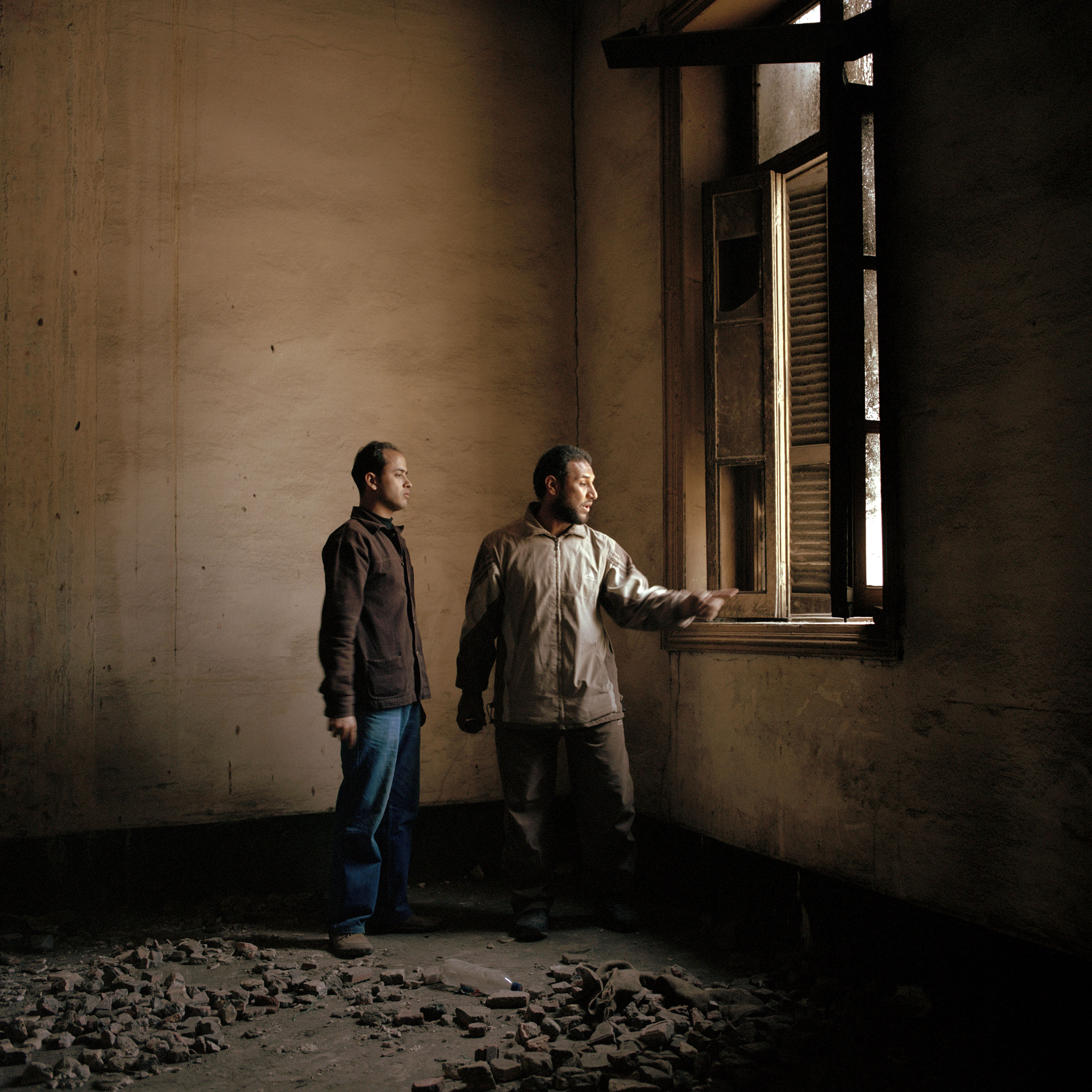
Anti-government protesters prepare to throw stones at pro-Mubarak supporters from the window of an abandoned house on the edge of Tahrir square.
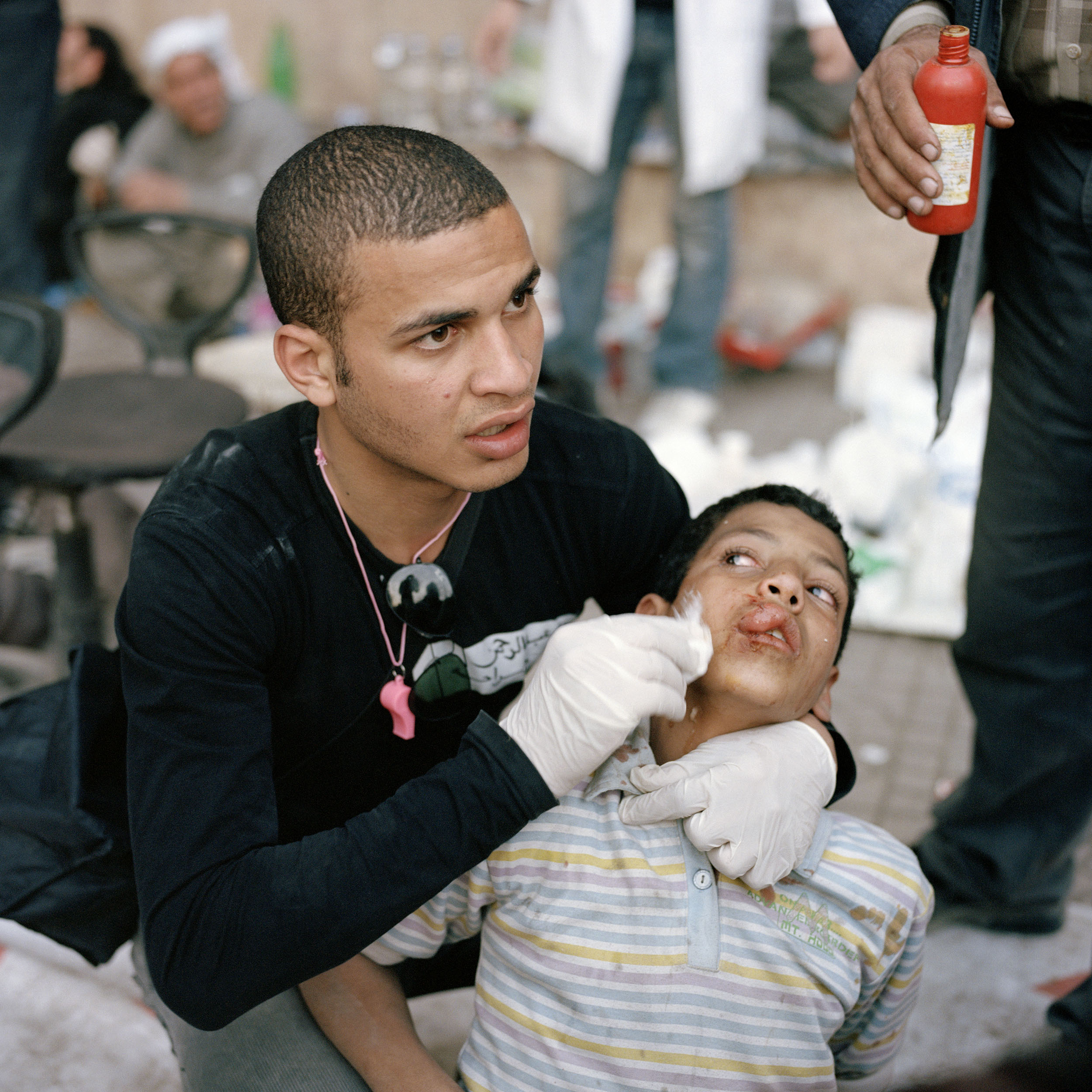
A volunteer medic in Tahrir square treats a young boy who was allegedly caught while fighting for supporters of Mubarak. Although badly stunned by a stone that hit him in the face, when the boy came to he was terrified to find he had been captured and was eager to get away from the people who were trying to help him.
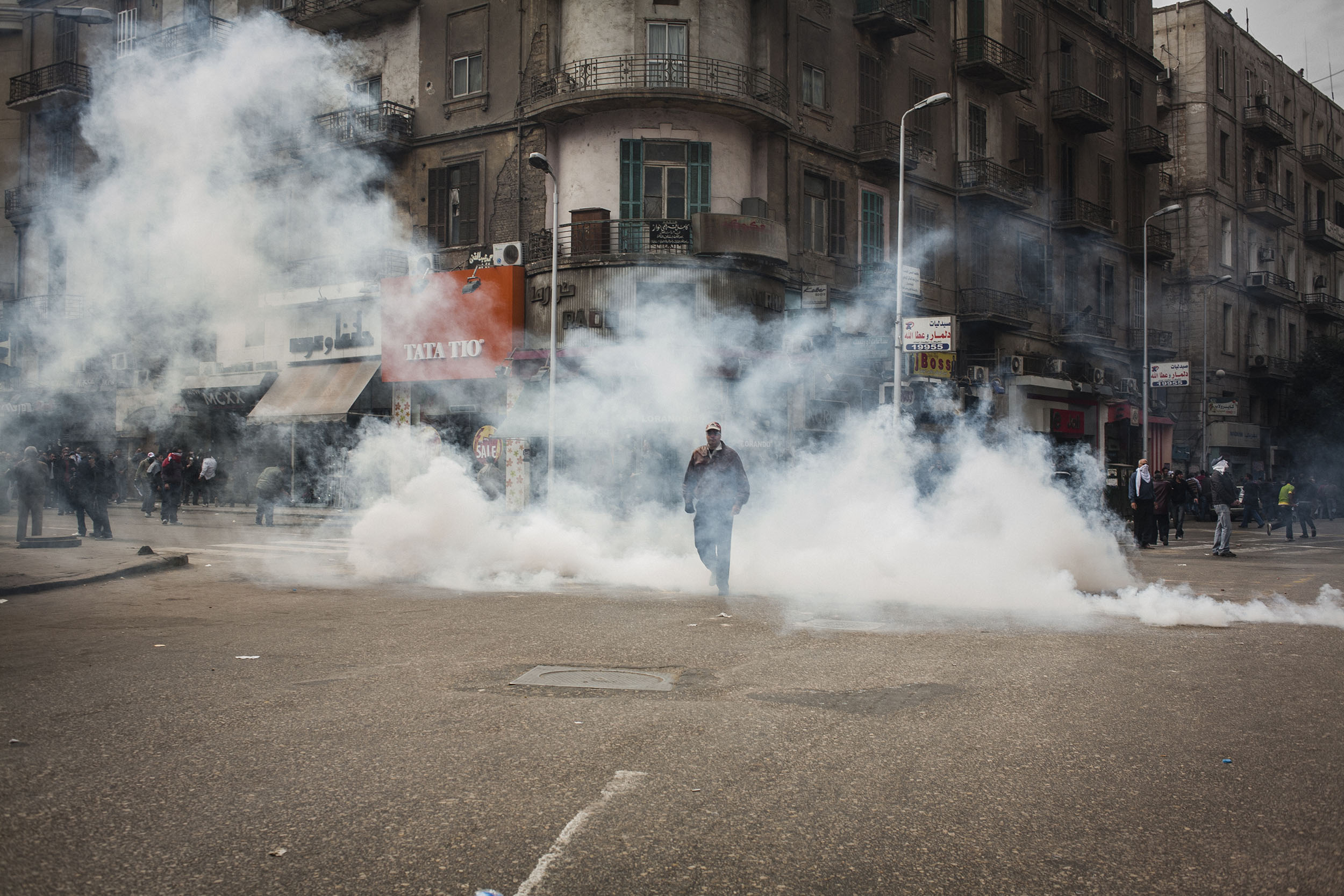
Protesters march through the streets of central Cairo amidst tear gas fired by the police. 25 January 2011 saw the beginning of a non-violent 18 day protest movement that eventually ended the 30-year rule of Hosni Mubarak and his National Democratic Party.
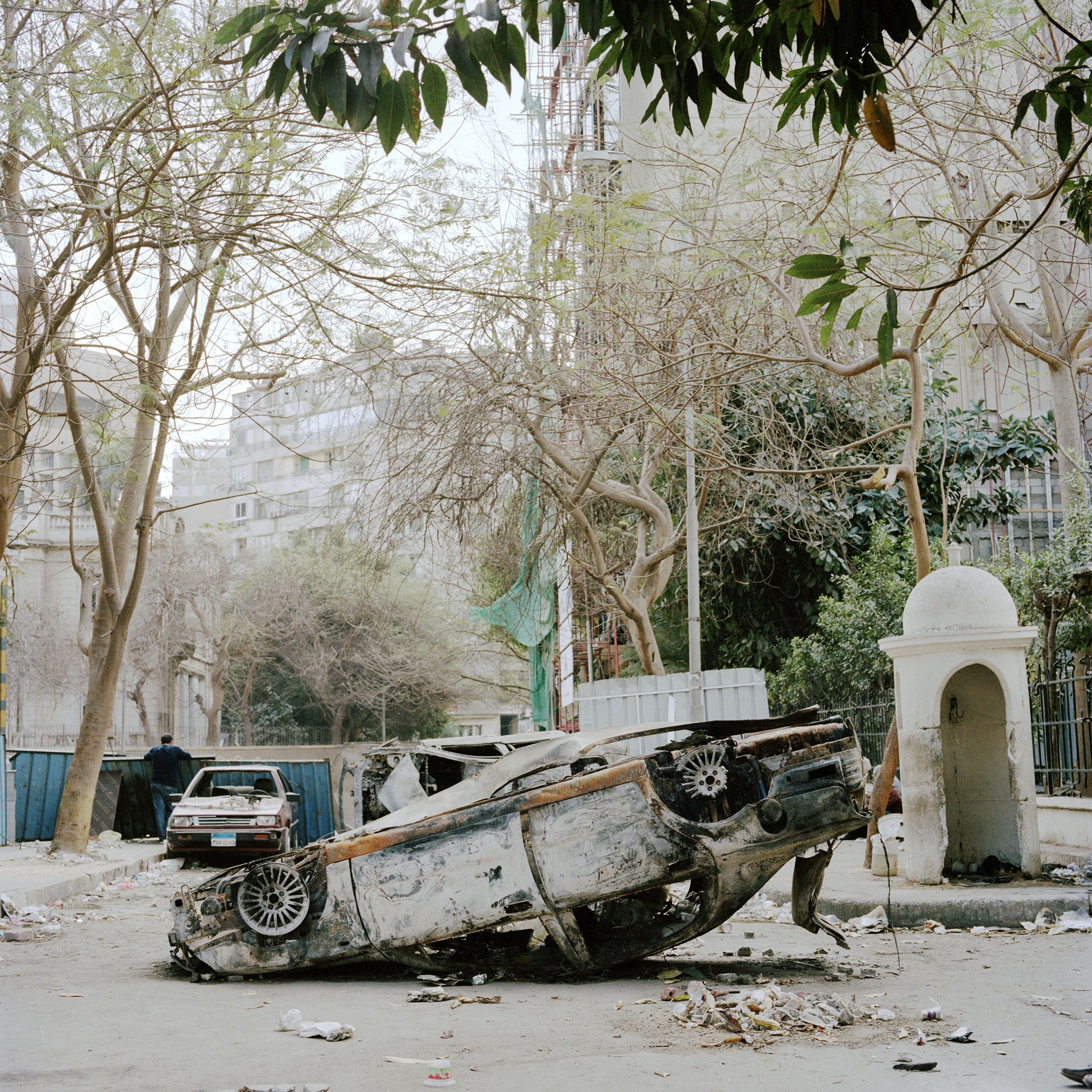
A burnt out car lies in the street outside the Omar Makram mosque in Tahrir square
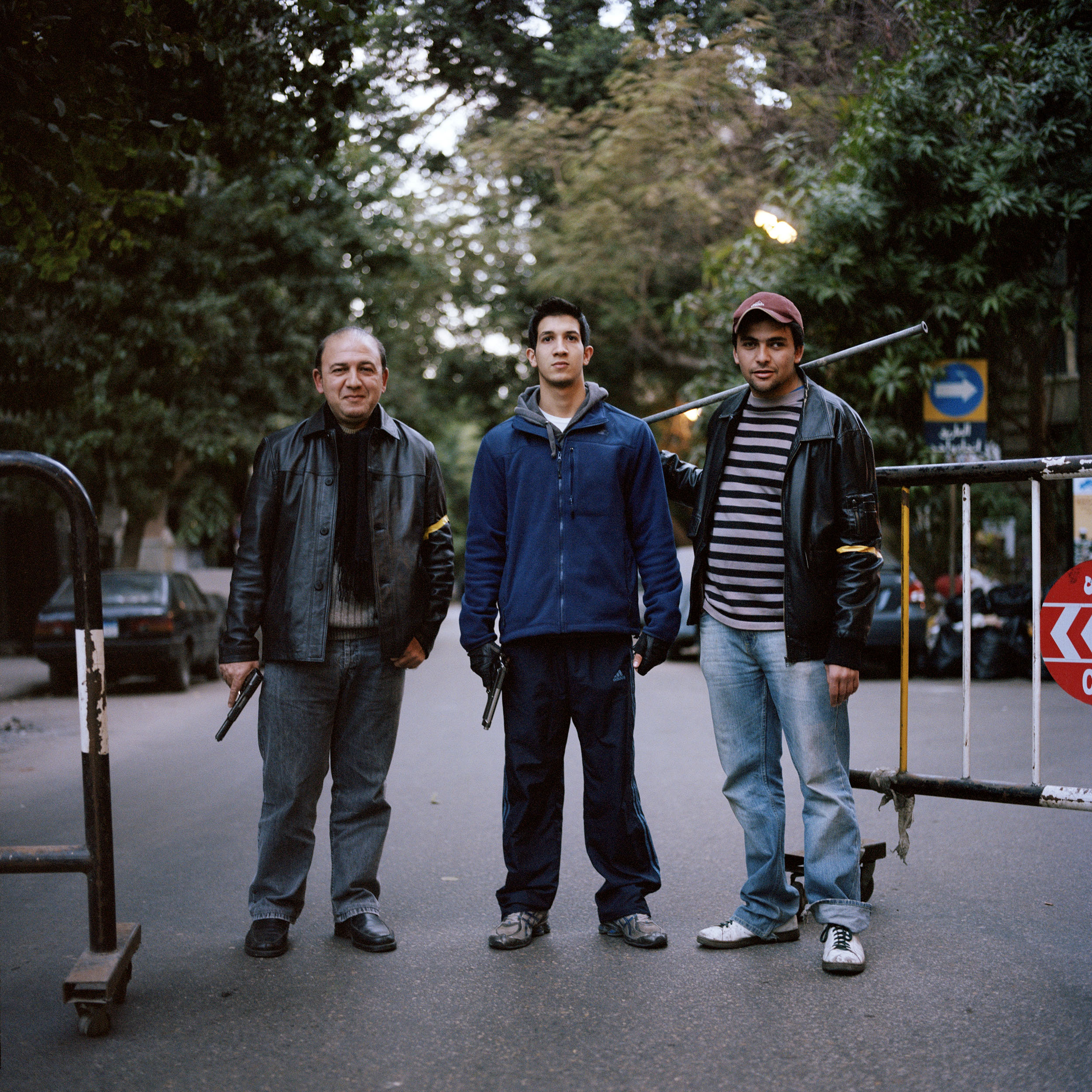
Residents of the neighbourhood of Zamalek, guarding one of the many check points in the area set up to prevent looting, stand for a portrait.
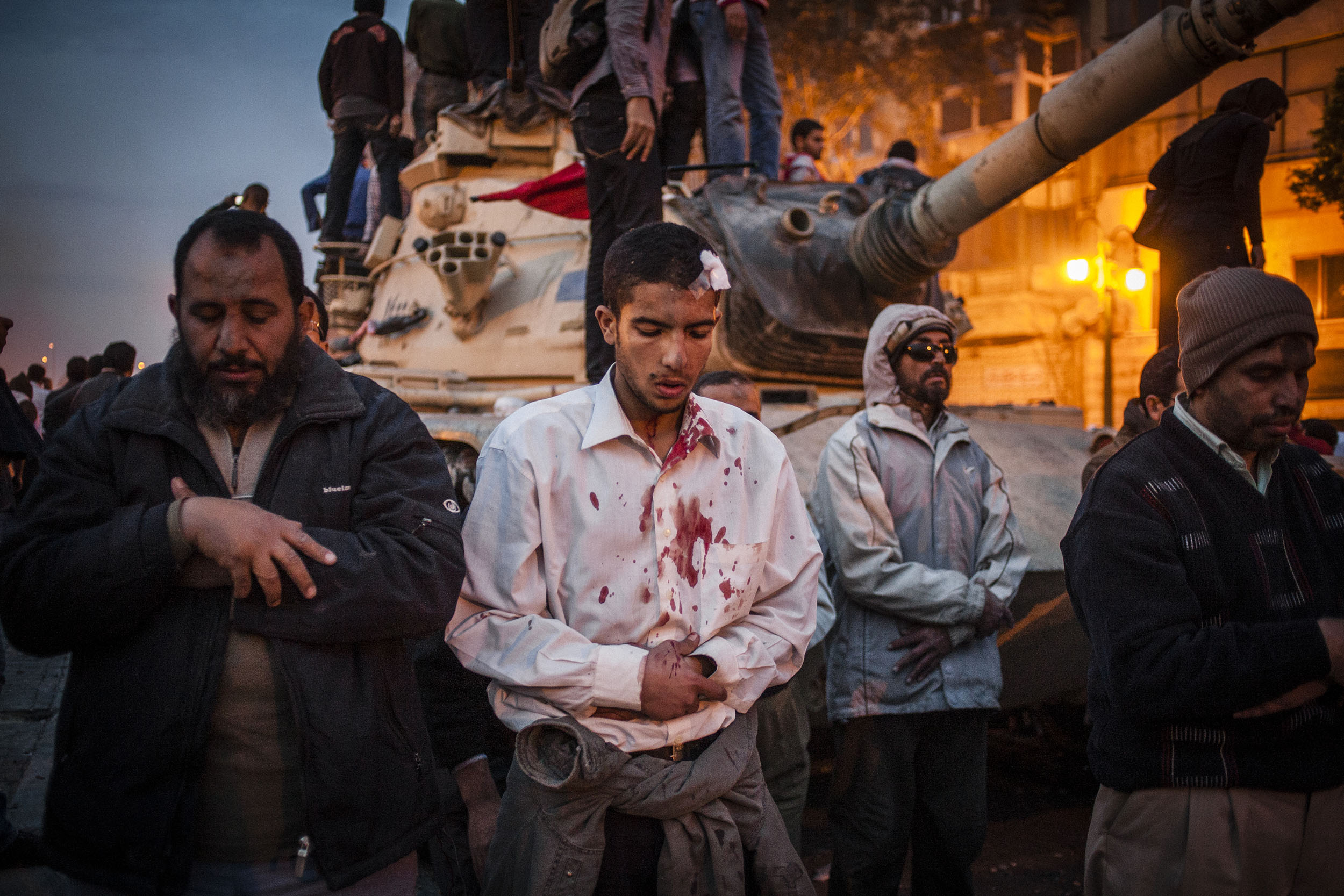
Anti-government protesters answer the evening call to prayer in front of an abandoned army tank amidst violent clashes with pro-Mubarak supporters outside the Egyptian Museum in Tahrir Square.
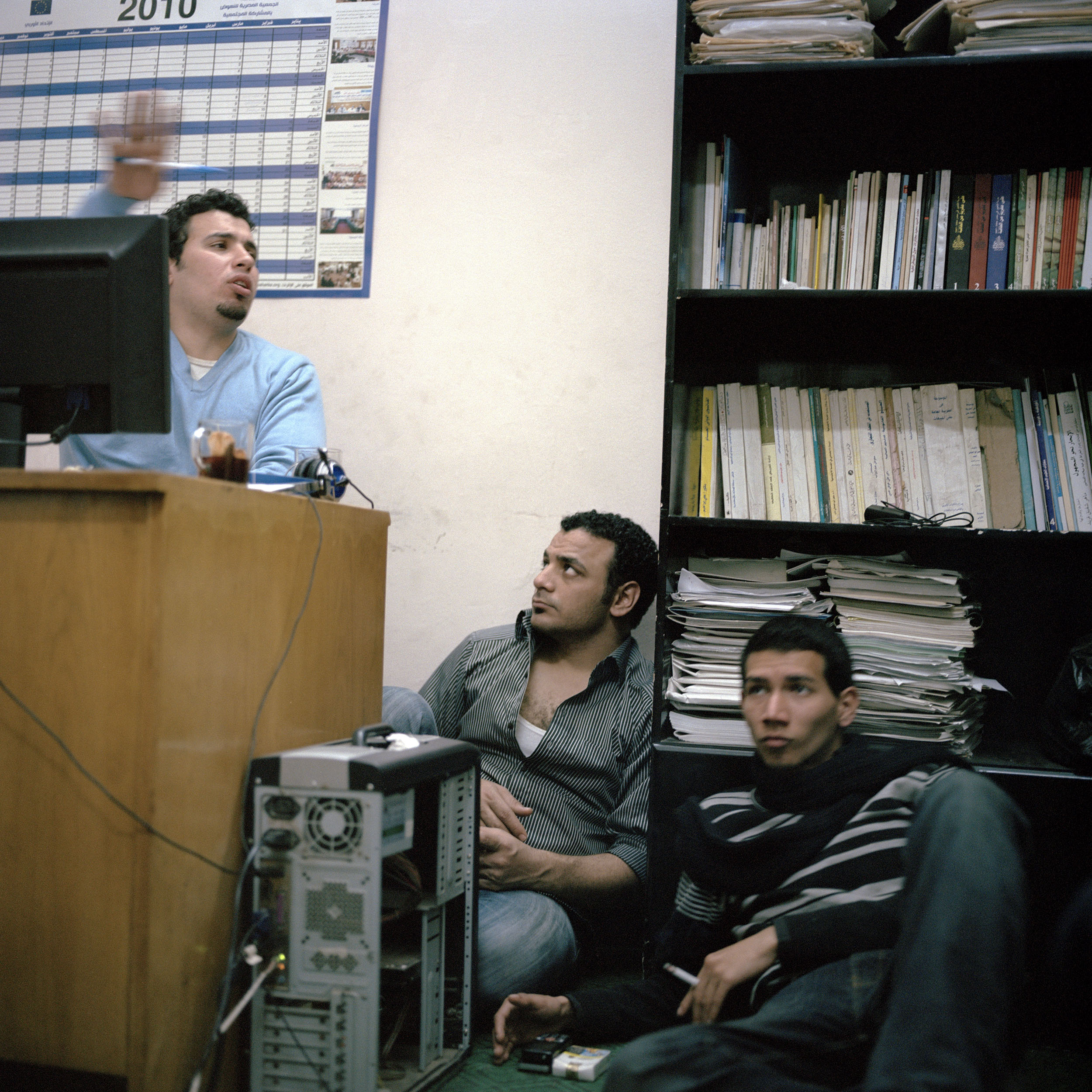
Members of the "26th of July Movement", a activism group set up through facebook in 2007, discuss plans to take the protests outside of Tahrir square in a bid to increase pressure on the Mubarak regime. The following day on Friday the 11th of February, Mubarak stood down.

A man is treated by a volunteer doctor at the first aid point set up on the morning of 11/02/2011 to cope with any injuries sustained to protesters.
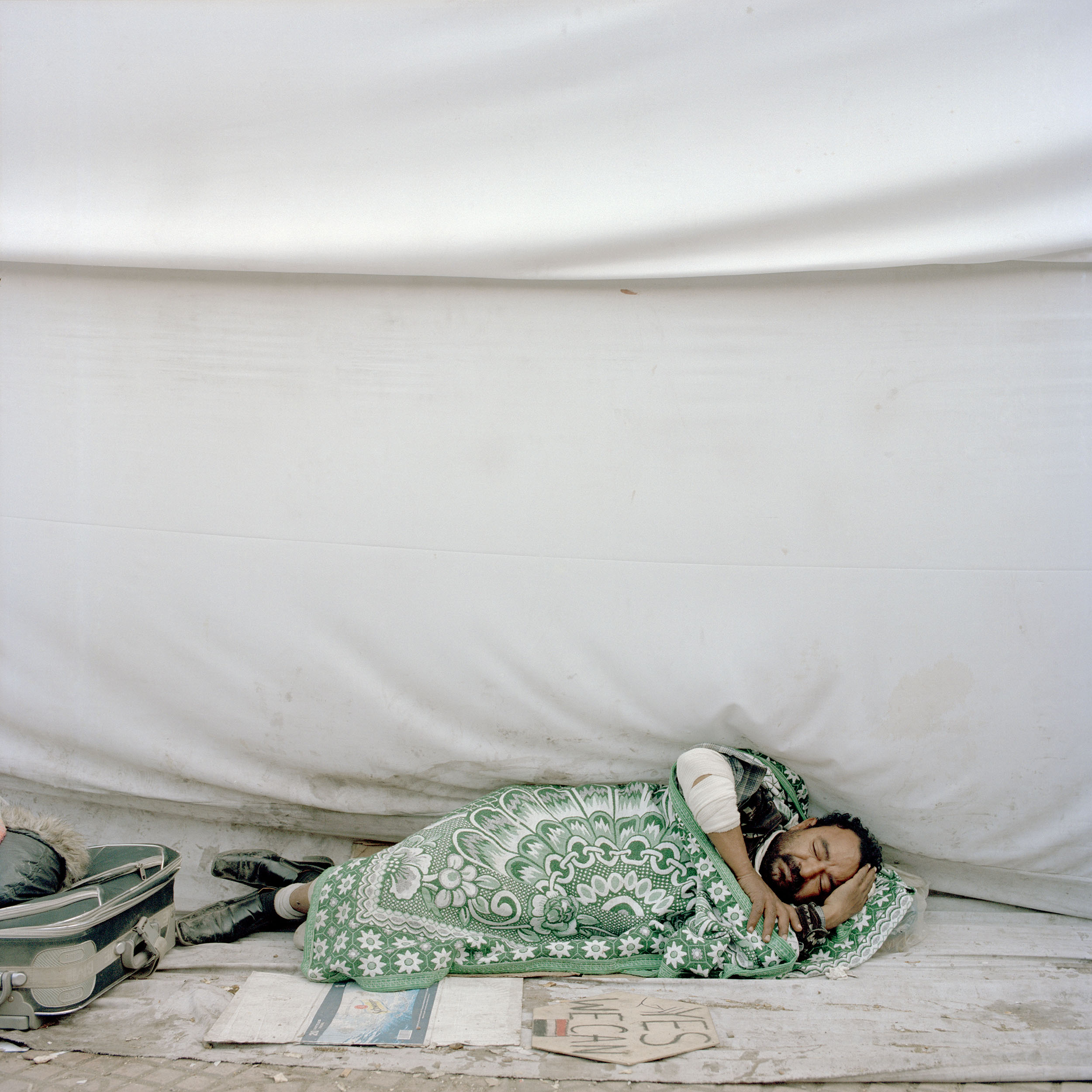
A man sleeps in front of projection screen in Tahrir square. In front of him there is a sign that says "Yes we can", the phrase made famous by Barak Obama and one that was adopted by the protesters of Egypt.
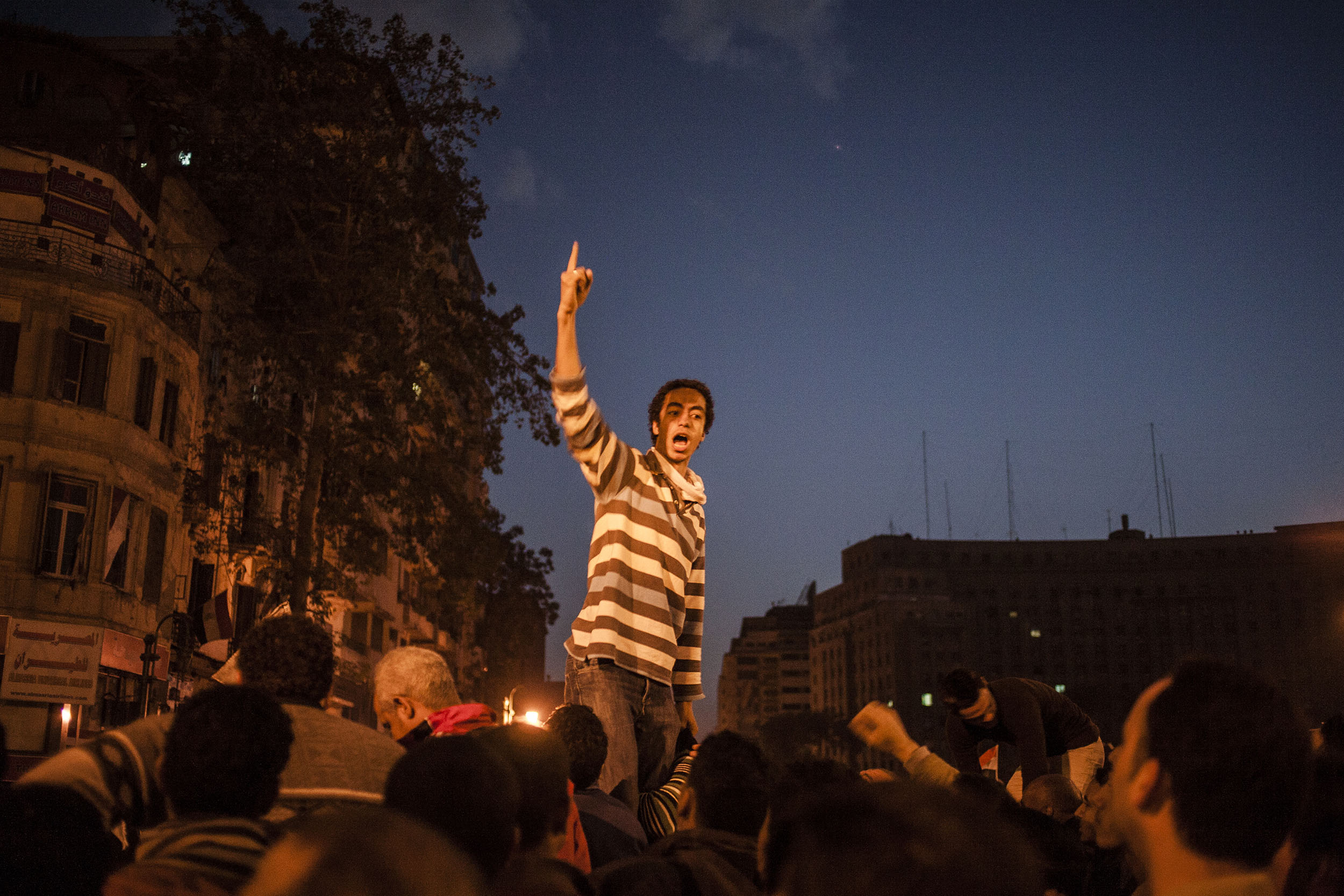
Protesters in Tahrir Square. 25 January 2011 saw the beginning of a non-violent 18 day protest movement that eventually ended the 30-year rule of Hosni Mubarak and his National Democratic Party.
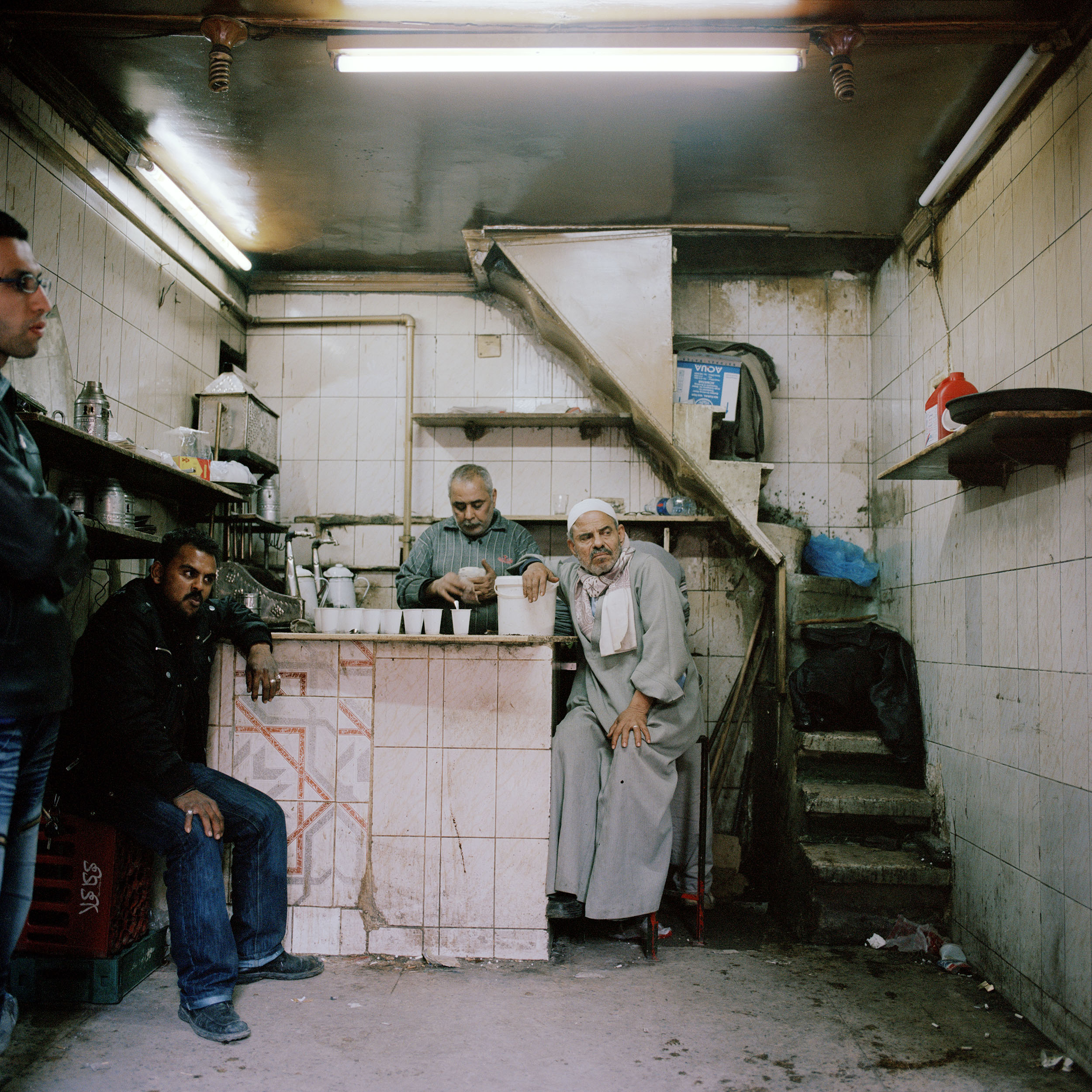
Men watch the news in a small cafe behind Tahrir square the morning after vicious fighting broke out when supporters of the regime marched on the square.
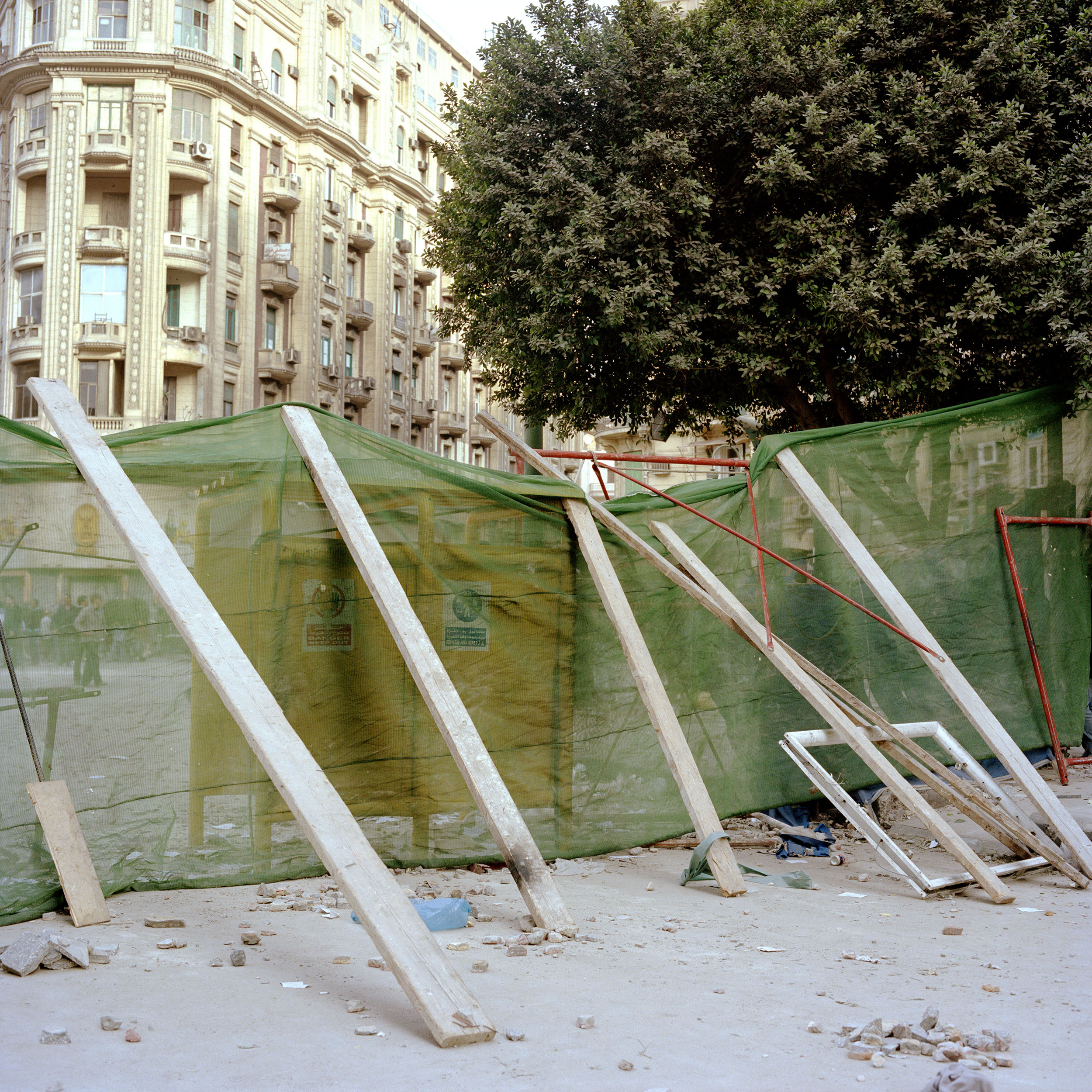
A barricade built by anti government protesters stands on a back-street leading off Tahrir square.

Protesters standing on top of a tank during anti Mubarak protests around Tahrir square, the scene of heavy clashes between pro and anti government protesters.
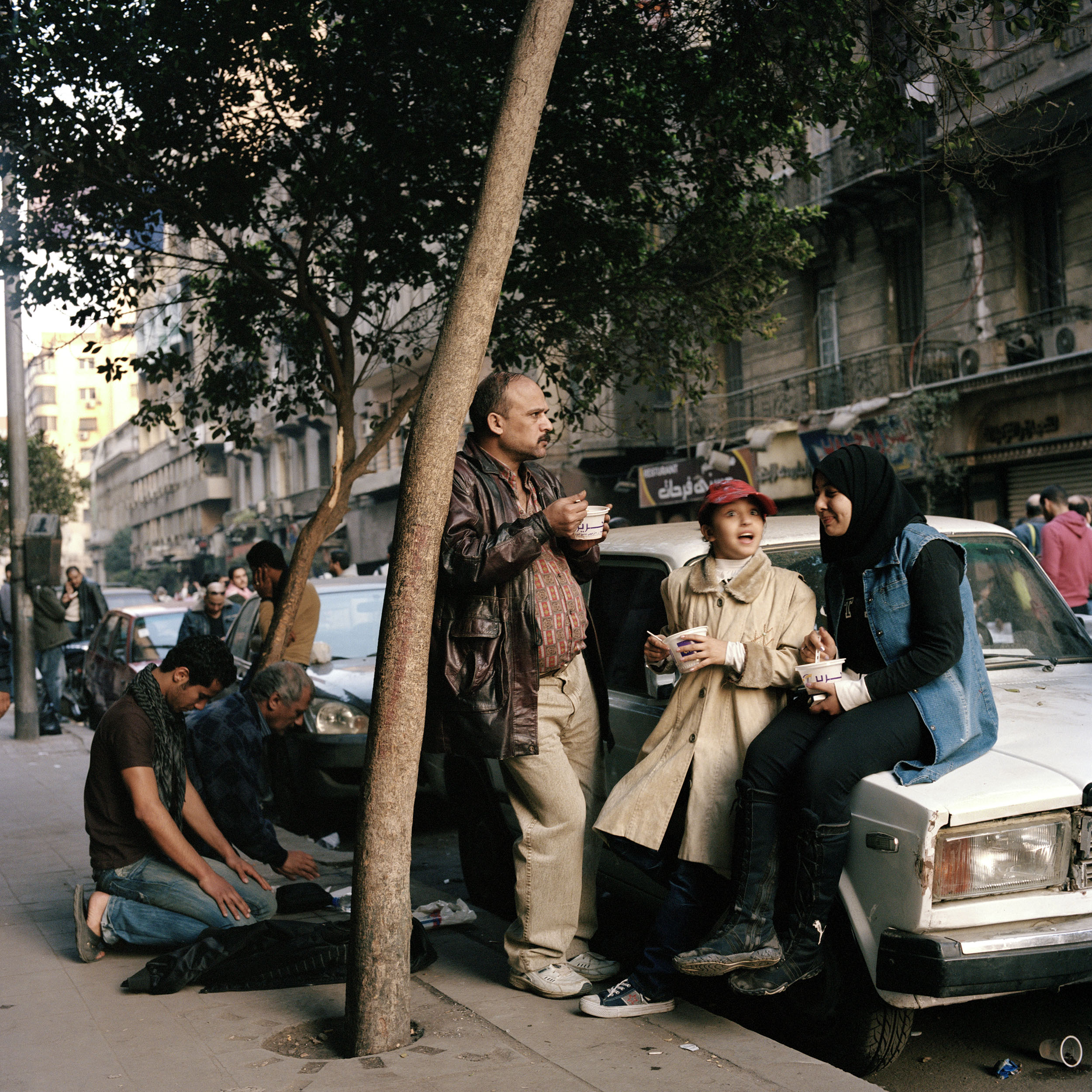
Protesters take a break from the crowds in Tahrir square to have some lunch while others answer the afternoon call to prayer.
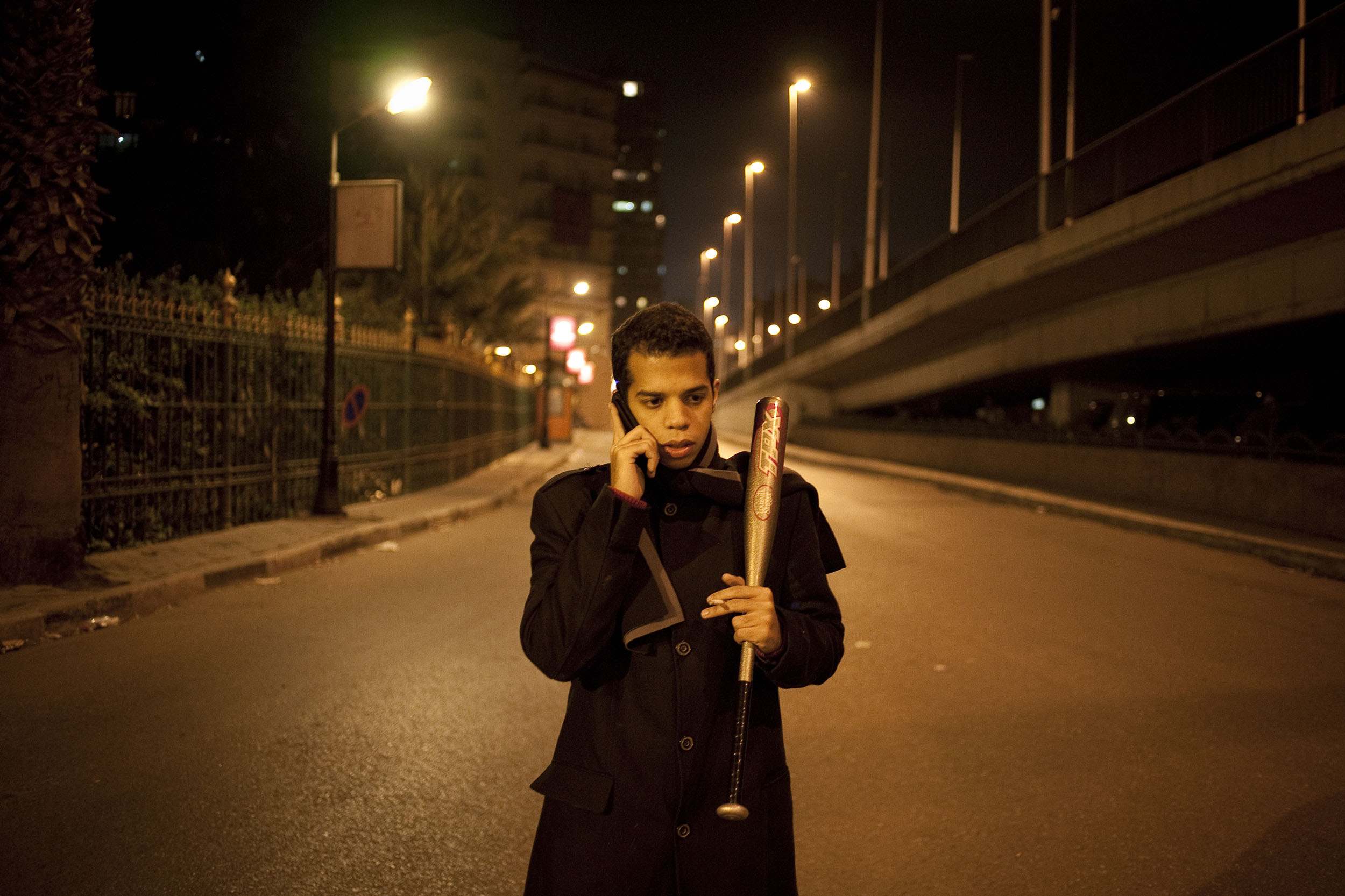
A young man guards the middle class neighbourhood of Zamalek from looters and gangs as he talks on a mobile phone holding a baseball bat.
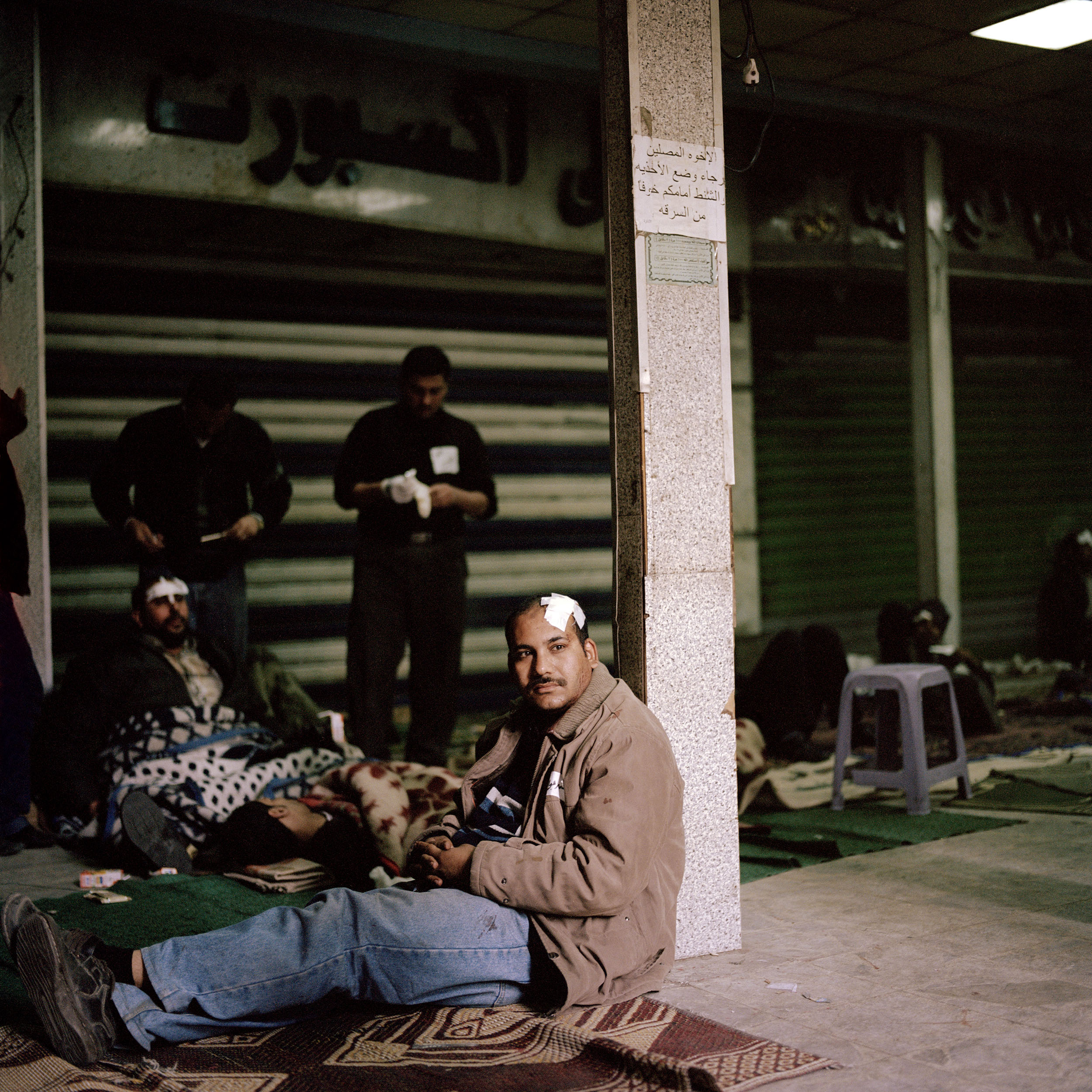
An anti government protester rests after being treated for a head wound sustained during clashes with Pro-Mubarak supporters that had marched on Tahrir square.
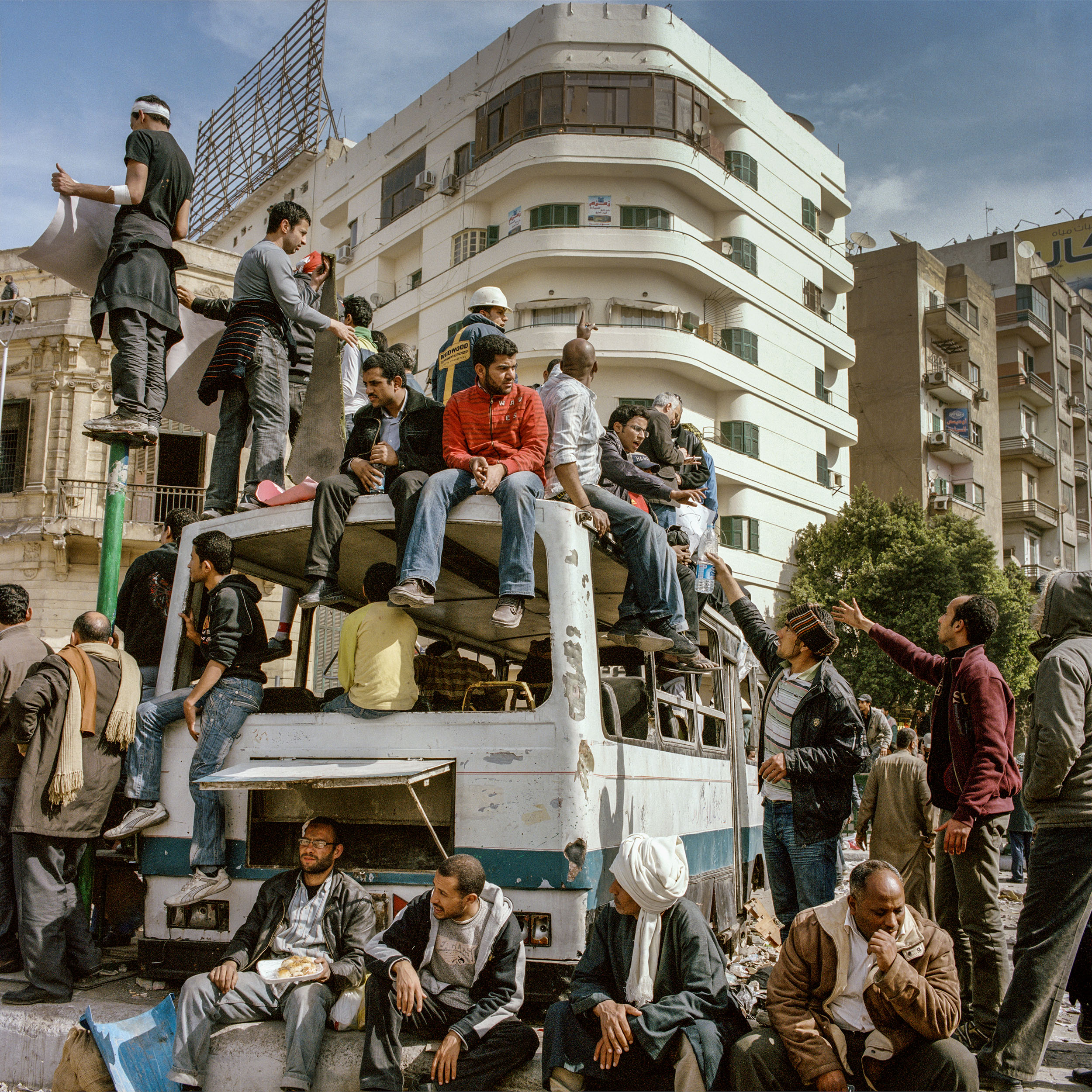
Anti-government protesters rest in the morning the day after fierce fighting broke out between them and supporters of president Mubarak.
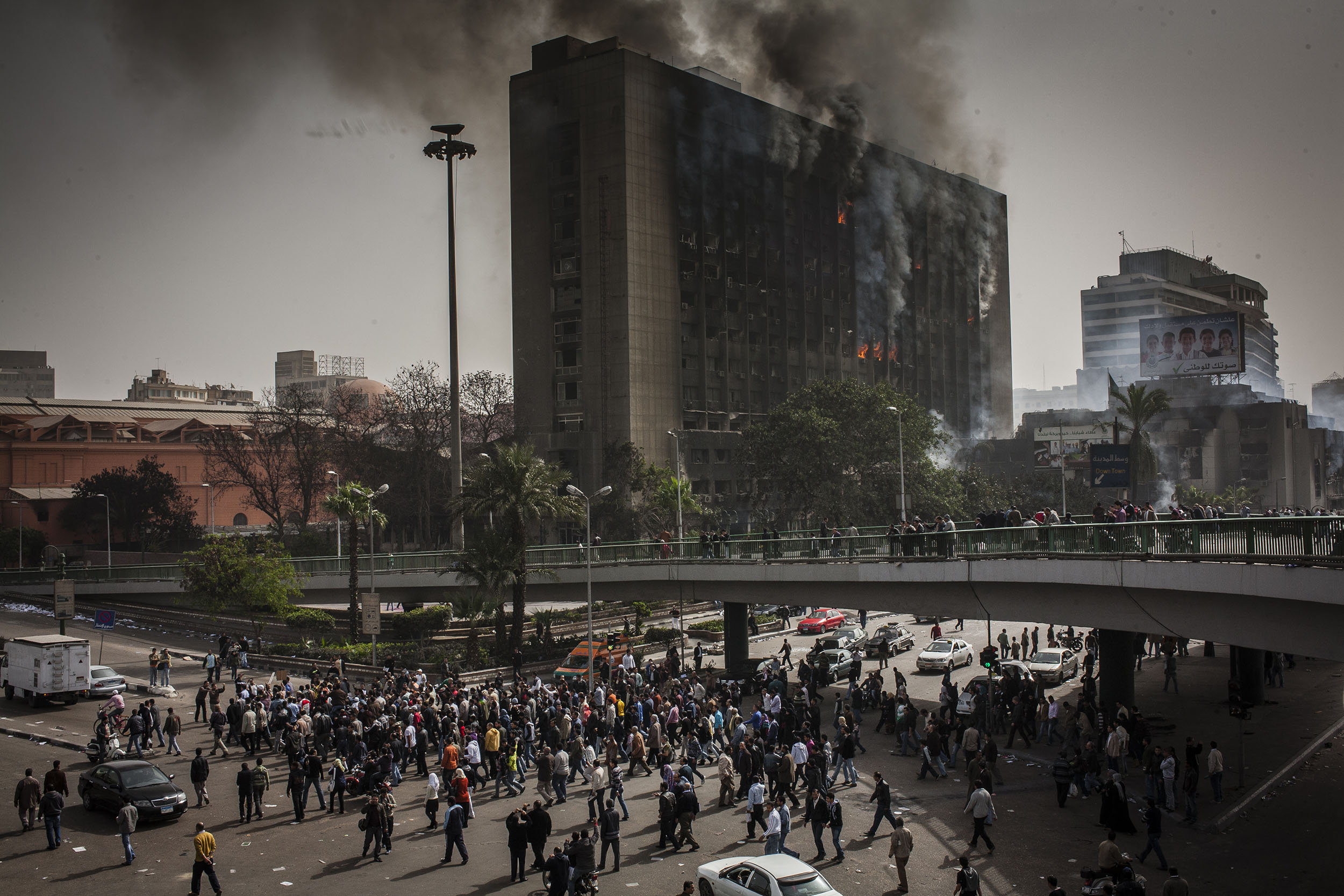
The ruling National Democratic party building burns the morning after being set on fire as protesters gather beneath.
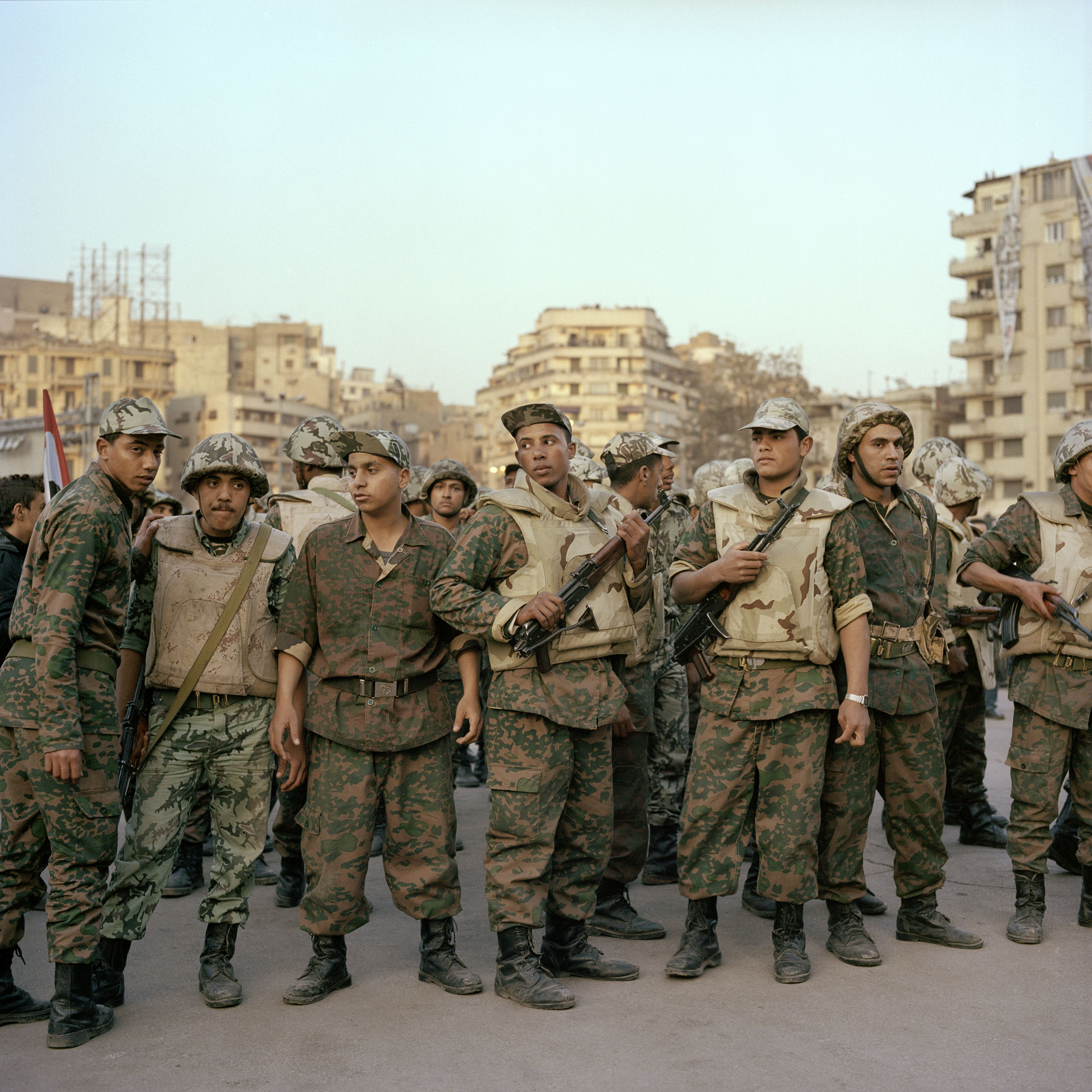
Soldiers patrol Tahrir square amid wild celebrations the day after Mubarak stepped down. It was rumored that angry supporters of the old regime were nearby.

Anti government protesters stand guard at a barrier set up to prevent Mubarak supporters from entering 'liberated Tahrir square.
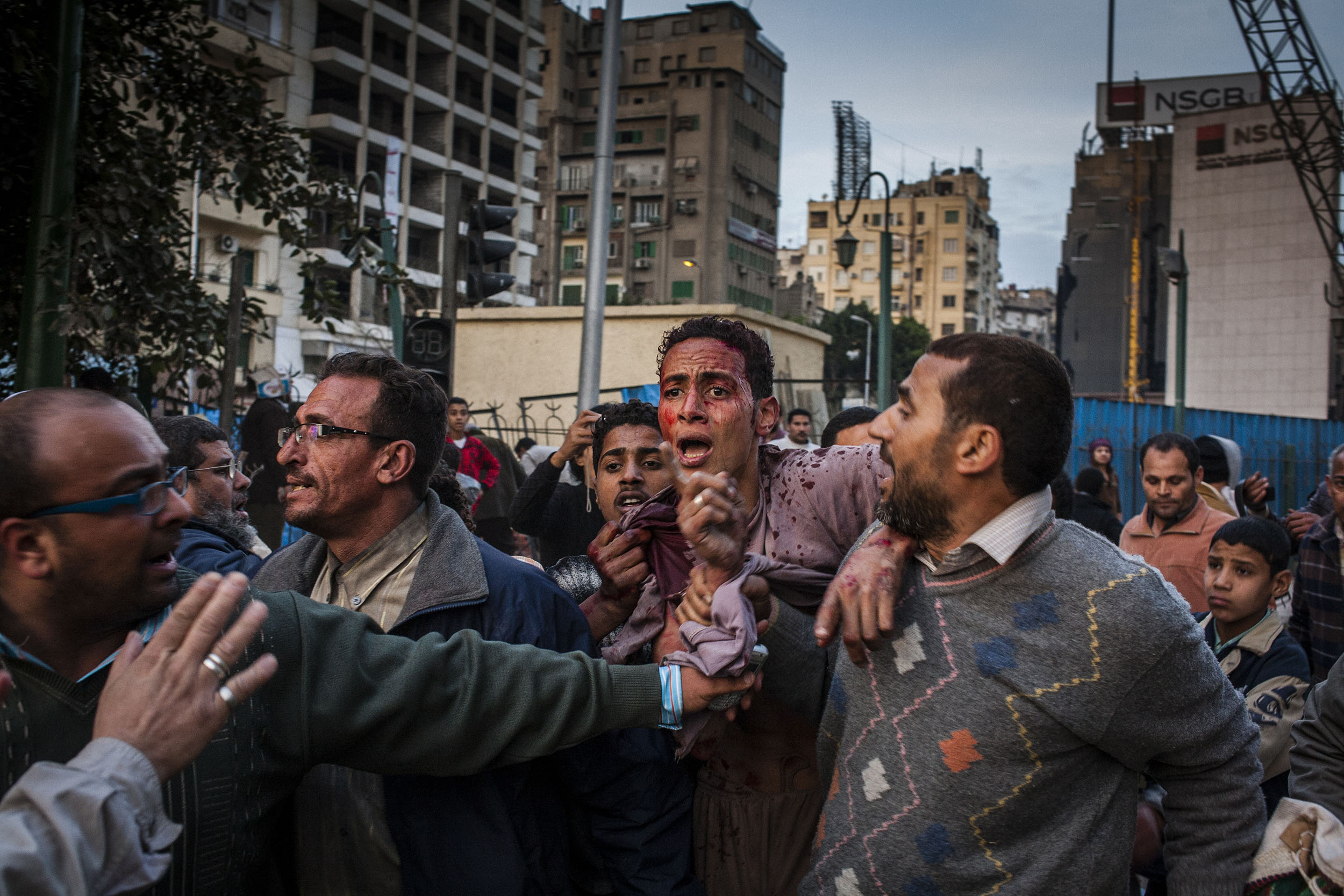
A young Mubarak supporter captured by anti-government protesters is beaten before being taken away outisde the Egyptian Museum in Tahrir Square.
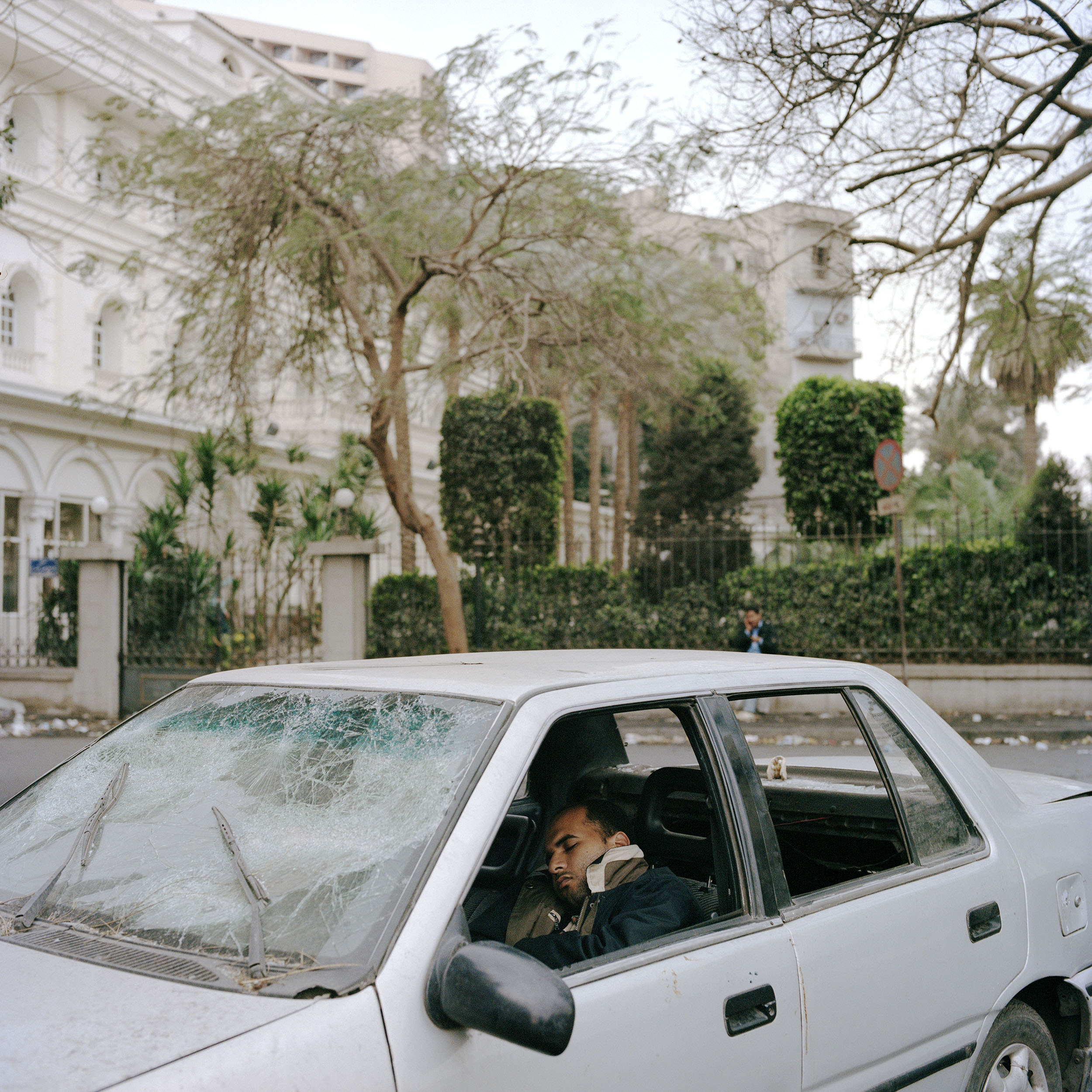
A man sleeps in a destroyed car outside the Omar Makram mosque in Tahrir square.
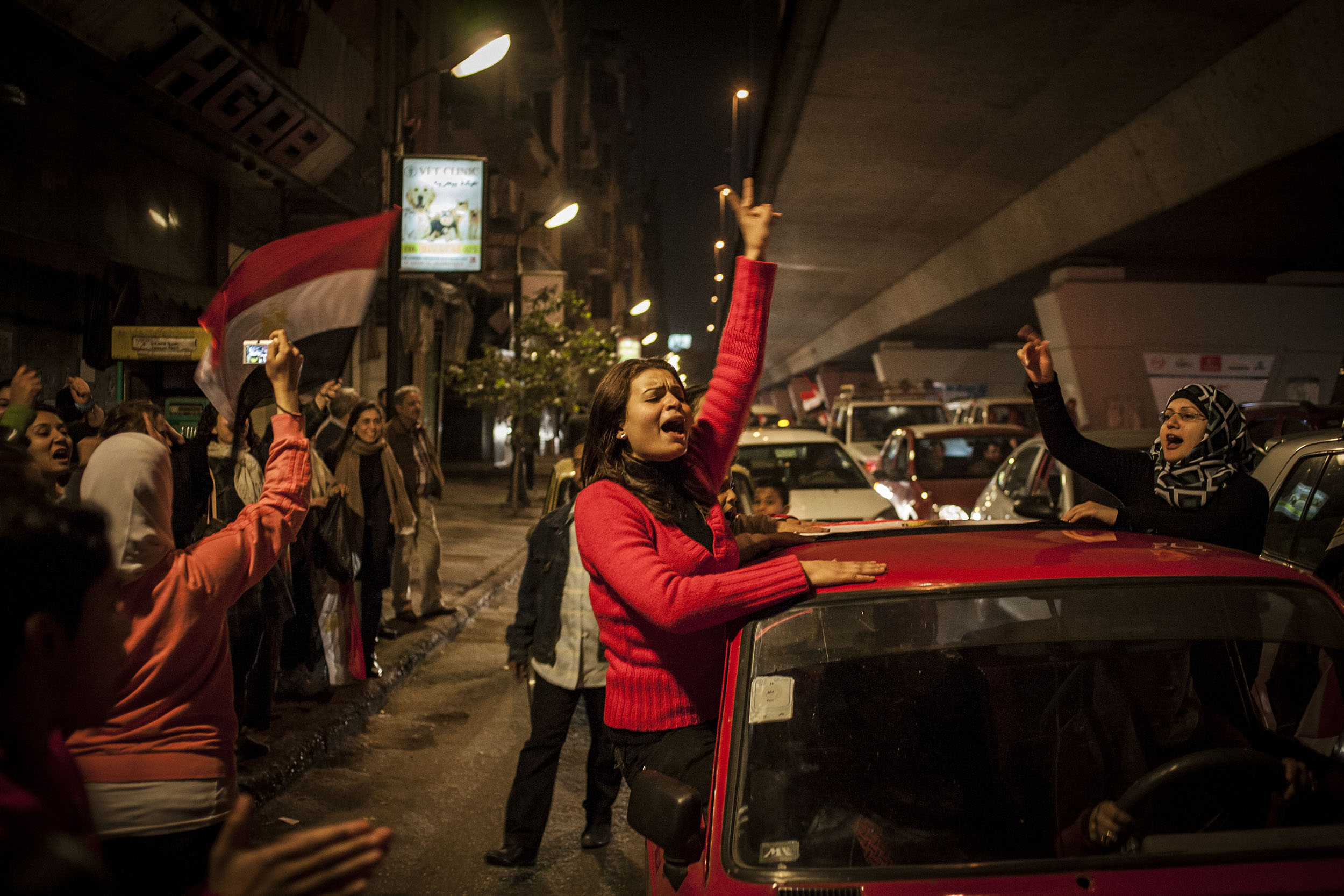
Residents of the middle class neighbourhood of Zamalek celebrated wildly under the 26th of July bridge.
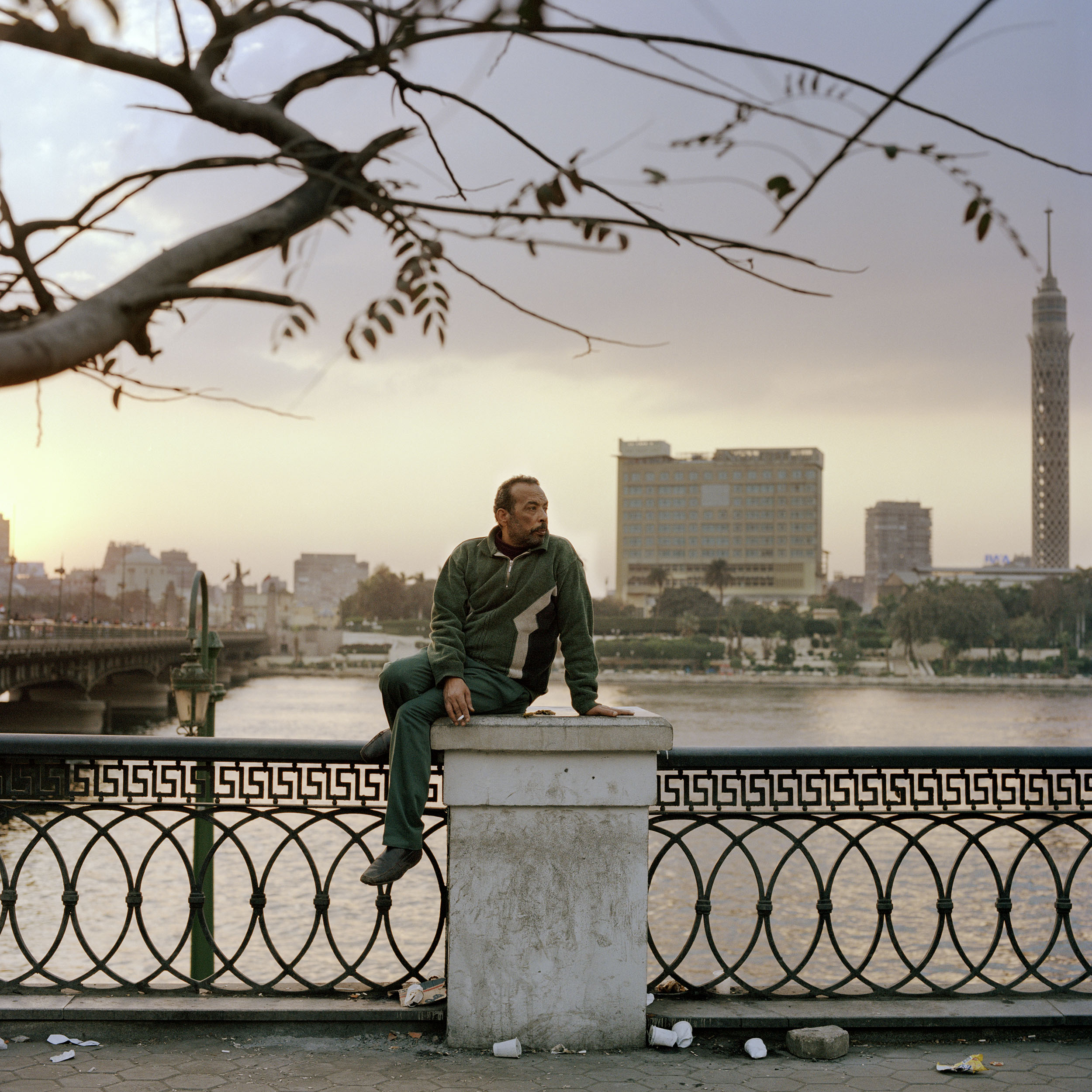
A man sits by the river nile beside Qasir Al Nil bridge, which became the main entry and exit point for anti government protesters.
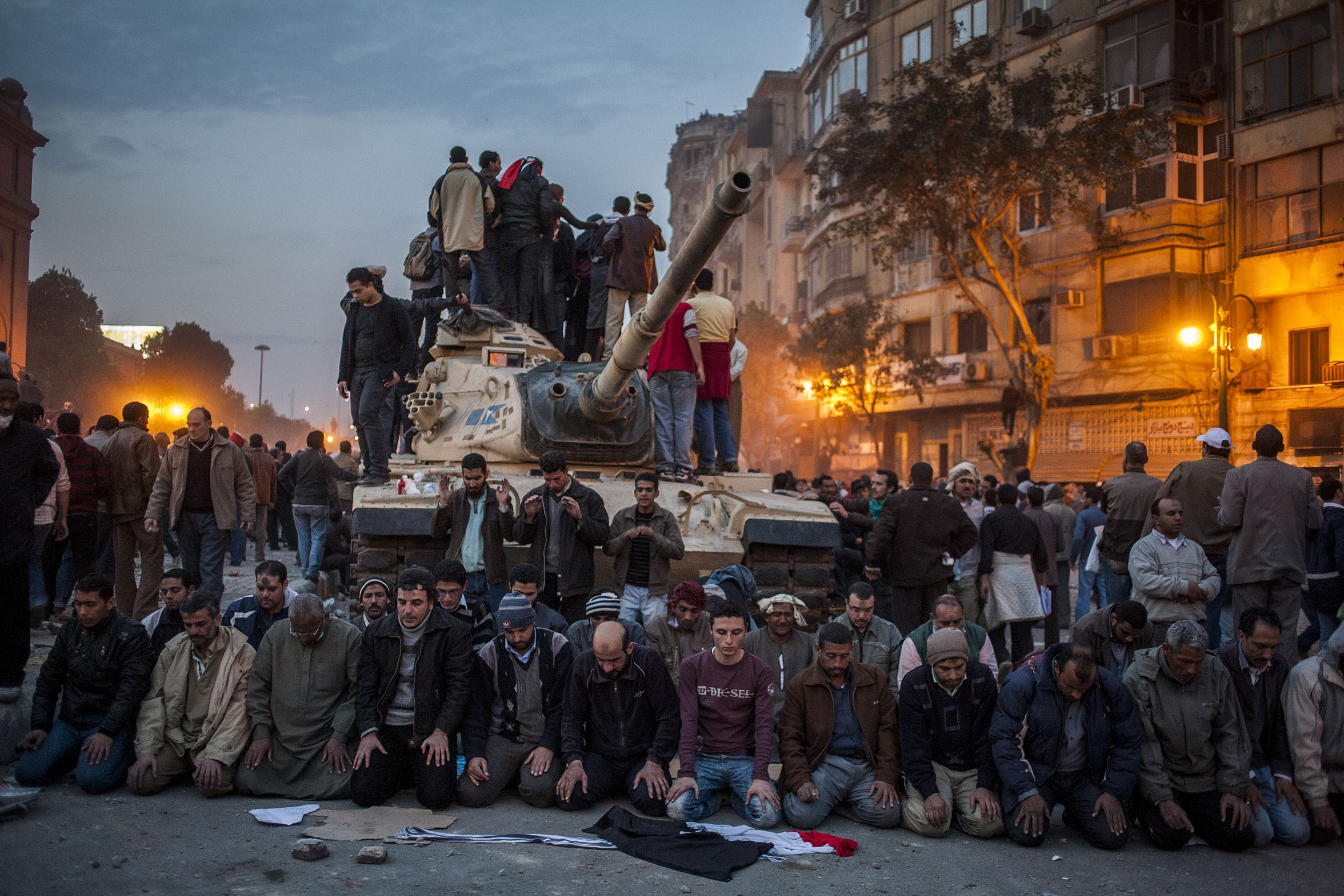
Anti-government protesters answer the evening call to prayer in front of an abandoned army tank amidst violent clashes with pro-Mubarak supporters outside the Egyptian Museum in Tahrir Square.
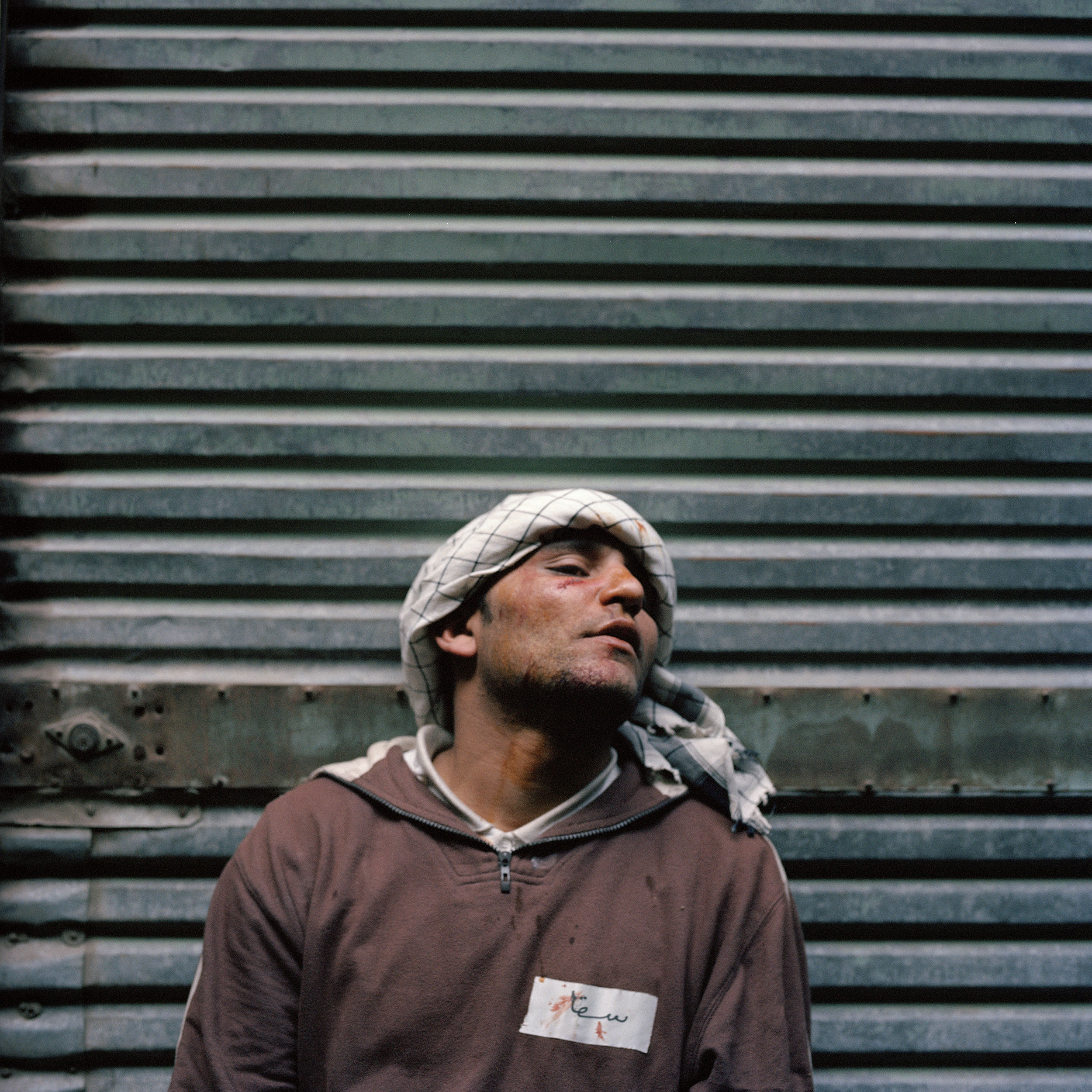
An anti-government protester is treated for injuries sustained in violent clashes with pro-Mubarak supporters in a mosque that is acting as an emergency hospital just off Tahrir Square.





























Anti-government protesters hurl stones at Mubarak supporters from the roof of an abandoned house on the edge of Tahrir Square.
A pro democracy protester who injured his leg the previous day when fighting broke out with supporters of Mubarak rests in a passage way leading off Tahrir square.
Anti government protesters on barricades constructed near Tahrir square. Throughout Friday, 4 February, anti government protesters protected their positions from pro Mubarak supporters around Tahrir square, the scene of heavy clashes between pro and anti government protesters.
Anti-government protesters prepare to throw stones at pro-Mubarak supporters from the window of an abandoned house on the edge of Tahrir square.
A volunteer medic in Tahrir square treats a young boy who was allegedly caught while fighting for supporters of Mubarak. Although badly stunned by a stone that hit him in the face, when the boy came to he was terrified to find he had been captured and was eager to get away from the people who were trying to help him.
Protesters march through the streets of central Cairo amidst tear gas fired by the police. 25 January 2011 saw the beginning of a non-violent 18 day protest movement that eventually ended the 30-year rule of Hosni Mubarak and his National Democratic Party.
A burnt out car lies in the street outside the Omar Makram mosque in Tahrir square
Residents of the neighbourhood of Zamalek, guarding one of the many check points in the area set up to prevent looting, stand for a portrait.
Anti-government protesters answer the evening call to prayer in front of an abandoned army tank amidst violent clashes with pro-Mubarak supporters outside the Egyptian Museum in Tahrir Square.
Members of the "26th of July Movement", a activism group set up through facebook in 2007, discuss plans to take the protests outside of Tahrir square in a bid to increase pressure on the Mubarak regime. The following day on Friday the 11th of February, Mubarak stood down.
A man is treated by a volunteer doctor at the first aid point set up on the morning of 11/02/2011 to cope with any injuries sustained to protesters.
A man sleeps in front of projection screen in Tahrir square. In front of him there is a sign that says "Yes we can", the phrase made famous by Barak Obama and one that was adopted by the protesters of Egypt.
Protesters in Tahrir Square. 25 January 2011 saw the beginning of a non-violent 18 day protest movement that eventually ended the 30-year rule of Hosni Mubarak and his National Democratic Party.
Men watch the news in a small cafe behind Tahrir square the morning after vicious fighting broke out when supporters of the regime marched on the square.
A barricade built by anti government protesters stands on a back-street leading off Tahrir square.
Protesters standing on top of a tank during anti Mubarak protests around Tahrir square, the scene of heavy clashes between pro and anti government protesters.
Protesters take a break from the crowds in Tahrir square to have some lunch while others answer the afternoon call to prayer.
A young man guards the middle class neighbourhood of Zamalek from looters and gangs as he talks on a mobile phone holding a baseball bat.
An anti government protester rests after being treated for a head wound sustained during clashes with Pro-Mubarak supporters that had marched on Tahrir square.
Anti-government protesters rest in the morning the day after fierce fighting broke out between them and supporters of president Mubarak.
The ruling National Democratic party building burns the morning after being set on fire as protesters gather beneath.
Soldiers patrol Tahrir square amid wild celebrations the day after Mubarak stepped down. It was rumored that angry supporters of the old regime were nearby.
Anti government protesters stand guard at a barrier set up to prevent Mubarak supporters from entering 'liberated Tahrir square.
A young Mubarak supporter captured by anti-government protesters is beaten before being taken away outisde the Egyptian Museum in Tahrir Square.
A man sleeps in a destroyed car outside the Omar Makram mosque in Tahrir square.
Residents of the middle class neighbourhood of Zamalek celebrated wildly under the 26th of July bridge.
A man sits by the river nile beside Qasir Al Nil bridge, which became the main entry and exit point for anti government protesters.
Anti-government protesters answer the evening call to prayer in front of an abandoned army tank amidst violent clashes with pro-Mubarak supporters outside the Egyptian Museum in Tahrir Square.
An anti-government protester is treated for injuries sustained in violent clashes with pro-Mubarak supporters in a mosque that is acting as an emergency hospital just off Tahrir Square.